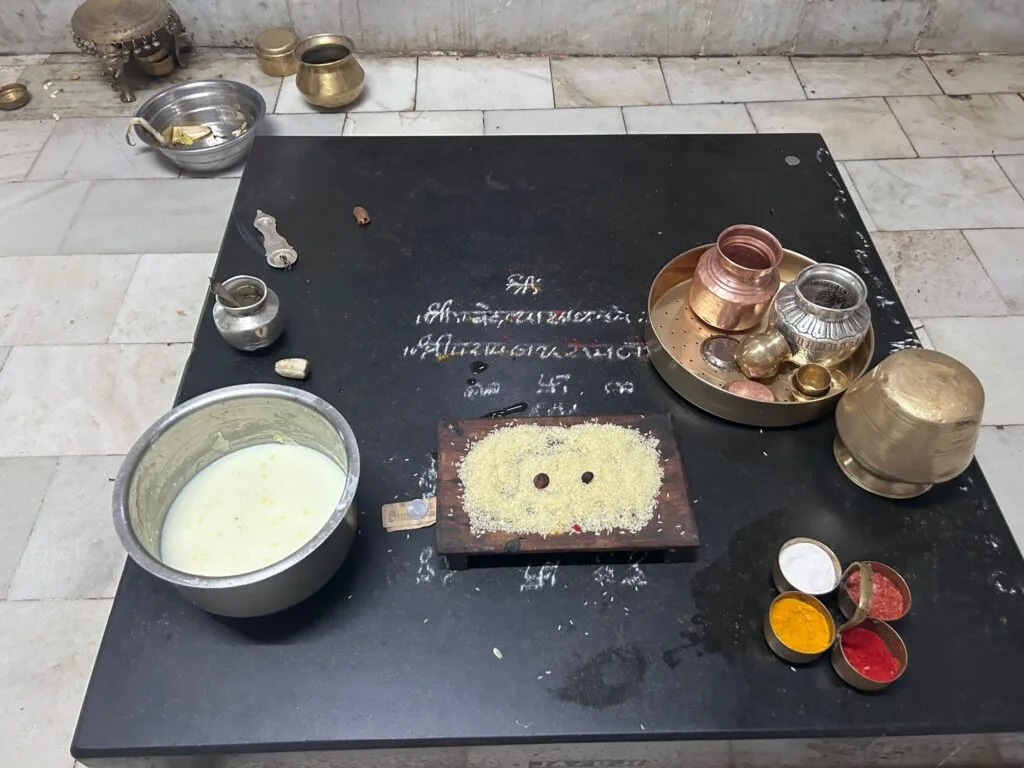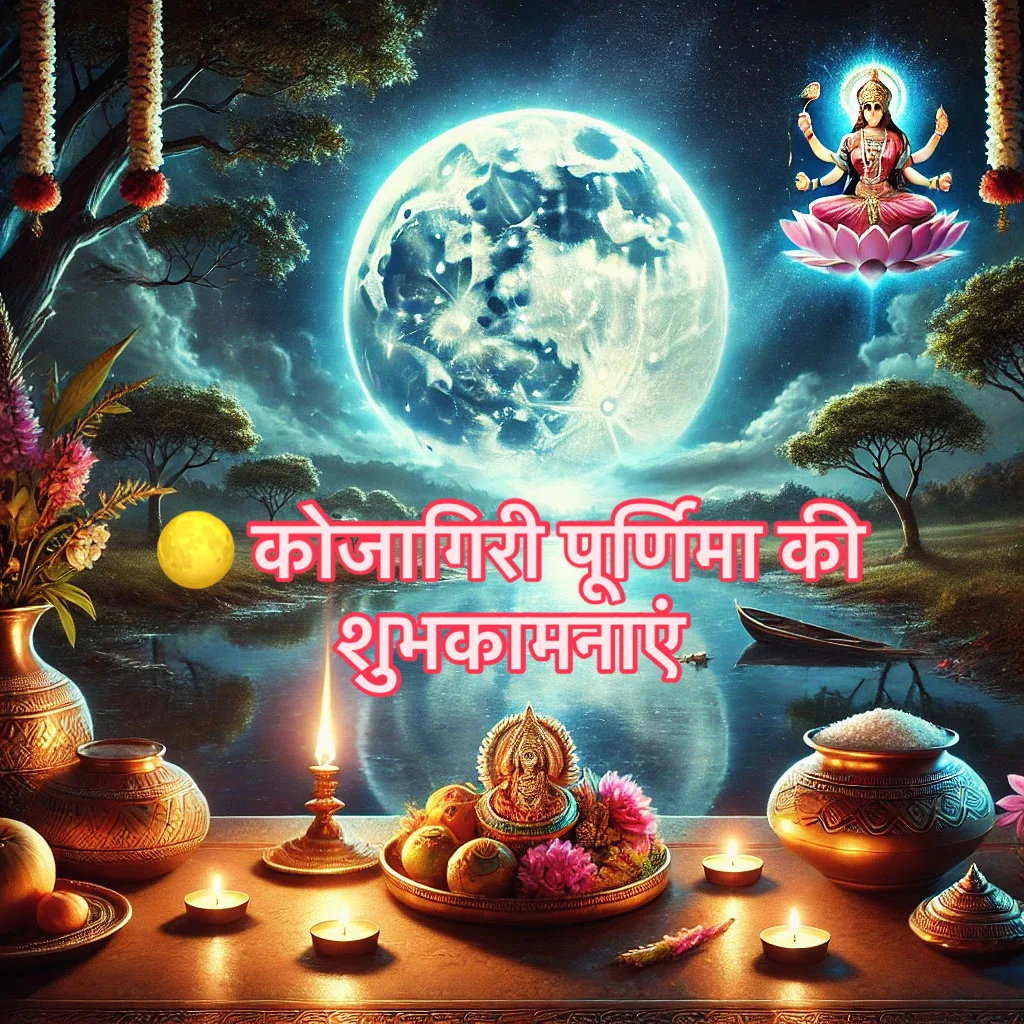What is Kojagiri Purnima?
Kojagiri Purnima, also known as Sharad Purnima, is a significant Hindu festival celebrated on the full moon night in the month of Ashwin (September-October). It marks the end of the monsoon and the beginning of the harvest season. This festival is closely associated with Goddess Lakshmi, the deity of wealth, and is also celebrated to honor the divine powers of the moon. On this night, it is believed that the moon showers its celestial nectar, bringing health, prosperity, and happiness to all who worship under its light.

Who Celebrated Kojagiri Purnima at Vyasashram?
At Vyasashram, this auspicious occasion was celebrated by a large gathering of devotees, led by Shree Varkhedkar Maharaj. The evening began with rituals and offerings to Lord Vishnu and Goddess Lakshmi, seeking blessings for prosperity and well-being. The serene atmosphere of Vyasashram, combined with the devotional fervor of the devotees, made it a night filled with divine grace.
Which Rituals Were Performed During Kojagiri Purnima?
The rituals commenced with the Lakshmi Pooja, followed by offerings of flowers, rice, and milk. Kheer (sweetened milk and rice), traditionally prepared on this occasion, was left under the open sky to absorb the moon’s rays. This sacred kheer is believed to have healing properties, and it was later distributed as prasadam to the devotees. Additionally, devotional songs and prayers were recited throughout the night, creating a spiritual and uplifting environment.

Whom Did the Celebration Involve?
The celebration was led by Shree Varkhedkar Maharaj and involved all devotees, temple priests, and ashram residents. Everyone present participated in the rituals, from decorating the temple to preparing the offerings. The collective devotion and prayers created an atmosphere of unity and spiritual connection.
Where Did the Kojagiri Purnima Celebration Take Place?
The celebration took place at Vyasashram, located in Gokhalenagar, Ramanthapur, Hyderabad. The temple, dedicated to Lord Vedavyas, was adorned with flowers, lamps, and sacred images of deities, including Lord Vishnu, Goddess Lakshmi, and Lord Indra, adding to the sanctity of the occasion.
How Was Kojagiri Purnima Celebrated?
The celebration began under the bright full moon. Special offerings, prayers, and kheer were made in honor of the moon and Goddess Lakshmi. The kheer was left under the night sky to soak up the moonlight, symbolizing divine blessings. Devotees gathered to chant bhajans and recite prayers throughout the night, celebrating the divine presence and seeking blessings for peace and prosperity.
Whose Blessings Are Sought on Kojagiri Purnima?
On Kojagiri Purnima, devotees seek the blessings of Goddess Lakshmi, Lord Vishnu, and the celestial deity, Indra, who is revered as the king of the gods and lord of the skies. According to ancient beliefs, Lord Indra also showers divine blessings during this festival, bringing abundant rains, prosperity, and fertility to the earth. His role as the god of rain and thunder makes his blessings particularly relevant during this harvest festival, as farmers express gratitude for the plentiful rains that nourish their crops.
When Does Kojagiri Purnima Take Place?
Kojagiri Purnima occurs on the full moon night of the Hindu month of Ashwin, usually between September and October. This year’s celebration at Vyasashram took place on a beautiful moonlit night, marking the special occasion with sacred rituals and prayers.
The Role of Lord Indra on Kojagiri Purnima
Kojagiri Purnima is not only a time to honor the moon and seek the blessings of Goddess Lakshmi but also a night to remember the significance of Lord Indra. As the god of rain and thunder, Indra plays a crucial role in ensuring a successful harvest, making his presence felt on this occasion. According to Hindu mythology, it is said that on Kojagiri Purnima, Lord Indra descends from the heavens, riding his celestial elephant, Airavata, to bless the earth with prosperity. His blessings are believed to ensure favorable weather conditions for farmers, promoting abundance and growth in the fields.
Devotees, especially those involved in agriculture, pray to Lord Indra for continued rainfall and fertile lands, thanking him for the bountiful harvests. The combination of the blessings from the moon, Goddess Lakshmi, and Lord Indra makes Kojagiri Purnima a powerful night for invoking prosperity, peace, and well-being.
Conclusion
The Kojagiri Purnima celebration at Vyasashram was a night filled with devotion, rituals, and divine blessings. Devotees gathered to honor the full moon, Goddess Lakshmi, Lord Vishnu, and Lord Indra, seeking their blessings for health, wealth, and prosperity. The serene atmosphere of Vyasashram, combined with the glowing moonlight and the heartfelt prayers of the devotees, made this night a truly divine experience. As the festival concluded, devotees left with a sense of peace, filled with the spiritual energy of this auspicious occasion.
